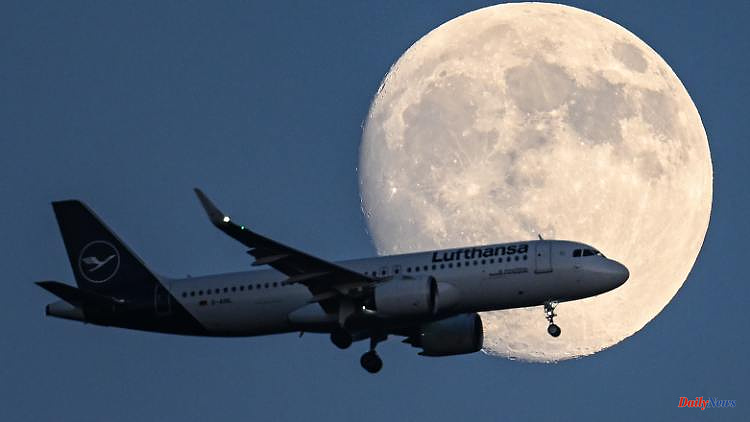If the full moon is particularly close to the earth, it is called a super moon. What keeps making headlines is actually less spectacular than the name suggests. Planetary geologist Ulrich Köhler explains to ntv.de why.
It has now become a real media star, the super moon. What is meant by this: In its orbit, the moon sometimes comes closer to the earth, sometimes it is further away. After all, the orbit is not a circle but an ellipse, so it resembles an egg. The closest point to the earth is called perigee, then the moon is about 357,000 kilometers away. If that happens to be near a full moon, it's called a super moon. Seems plausible: The closer the moon, the bigger it appears. This regularly makes headlines.
But: Can you really see a difference to other full moons with the naked eye? "Not really," says Ulrich Köhler, planetary geologist at the DLR Institute for Planetary Research in Berlin-Adlershof, to ntv.de. The visible difference in size between the moon closest to Earth (supermoon) and the moon furthest from Earth in the so-called apogee (also called micromoon) is around 14 percent. "That corresponds to the difference between a 2-euro coin and a 1-euro coin viewed from a distance of 2.70 metres," says Köhler.
Of course, when these two coins are hanging next to each other on a wall, the difference in size is just about noticeable. But there is only one moon in the sky at a time, making comparison difficult. "Without a direct reference, you can't see any difference with the naked eye," says Köhler. After all: The brightness of the supermoon is about 30 percent greater than that of the micromoon. "So the eye has at least a stronger impression of brightness."
However, the term super moon does not come from science at all, but was probably created in 1979 by an astrologer in the USA. For years, however, the super moon has enjoyed great popularity in the media. "In astronomy, the term supermoon has no relevance," says Köhler. He believes that the expectations of the observers also play a role in the supermoon hype. "You read about a super moon, look up at the sky and the moon seems bigger."
The effect could also be enhanced by the so-called moon illusion: when the moon is just above the horizon, it appears larger to the observer. In contrast to the super moon, however, there is no measurable difference in size with the moon illusion - it is a purely optical illusion. Refraction of light or other physical causes do not exist. Exactly why the illusion arises has not yet been finally clarified - one assumption is that the relationship between the moon and the landscape on the horizon plays a role. Similar to the Ponzo deception.
But none of that should spoil the enjoyment of the super moon: After all, the full moon is always an eye-catcher - whether you notice a difference in size or not. So here are the most important Supermoon facts for lovers:
But how well will the super moon be visible? "Wednesday night is definitely the better night for stargazers in Germany," says ntv weather expert Björn Alexander. Only in the north-east do "more compact clouds" move through. "If you want to sit outside longer, you should take a sweater or a jacket with you, because it's going to be pretty chilly again, with lows between 14 and 7 degrees."
However, the super moon will not pass Earth without a trace. The closer a celestial body is, the stronger its attraction, gravitation, is. This is also noticeable with the super moon: the super moon has an influence on the tidal range - i.e. on how clearly the ebb and flow are. Although this effect is measurable, it is also negligible.












